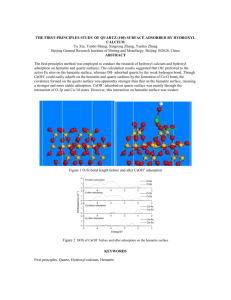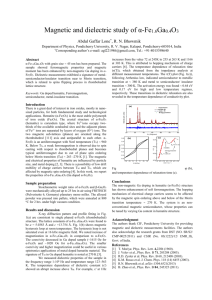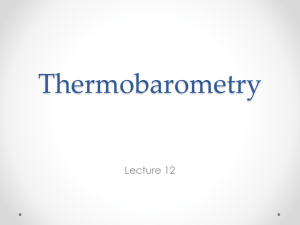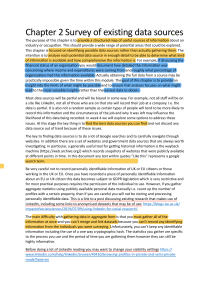Supporting information Hematite nanoparticle synthesis Two
advertisement
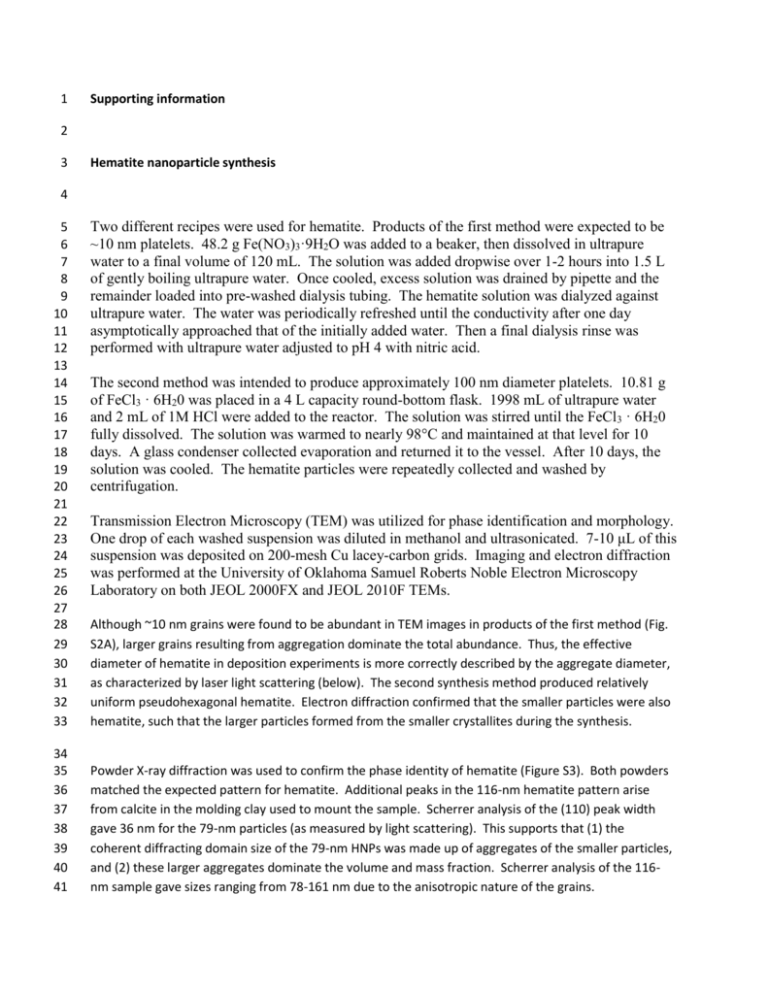
1 Supporting information 2 3 Hematite nanoparticle synthesis 4 5 6 7 8 9 10 11 12 13 14 15 16 17 18 19 20 21 22 23 24 25 26 27 28 29 30 31 32 33 34 35 36 37 38 39 40 41 Two different recipes were used for hematite. Products of the first method were expected to be ~10 nm platelets. 48.2 g Fe(NO3)3·9H2O was added to a beaker, then dissolved in ultrapure water to a final volume of 120 mL. The solution was added dropwise over 1-2 hours into 1.5 L of gently boiling ultrapure water. Once cooled, excess solution was drained by pipette and the remainder loaded into pre-washed dialysis tubing. The hematite solution was dialyzed against ultrapure water. The water was periodically refreshed until the conductivity after one day asymptotically approached that of the initially added water. Then a final dialysis rinse was performed with ultrapure water adjusted to pH 4 with nitric acid. The second method was intended to produce approximately 100 nm diameter platelets. 10.81 g of FeCl3 · 6H20 was placed in a 4 L capacity round-bottom flask. 1998 mL of ultrapure water and 2 mL of 1M HCl were added to the reactor. The solution was stirred until the FeCl3 · 6H20 fully dissolved. The solution was warmed to nearly 98°C and maintained at that level for 10 days. A glass condenser collected evaporation and returned it to the vessel. After 10 days, the solution was cooled. The hematite particles were repeatedly collected and washed by centrifugation. Transmission Electron Microscopy (TEM) was utilized for phase identification and morphology. One drop of each washed suspension was diluted in methanol and ultrasonicated. 7-10 μL of this suspension was deposited on 200-mesh Cu lacey-carbon grids. Imaging and electron diffraction was performed at the University of Oklahoma Samuel Roberts Noble Electron Microscopy Laboratory on both JEOL 2000FX and JEOL 2010F TEMs. Although ~10 nm grains were found to be abundant in TEM images in products of the first method (Fig. S2A), larger grains resulting from aggregation dominate the total abundance. Thus, the effective diameter of hematite in deposition experiments is more correctly described by the aggregate diameter, as characterized by laser light scattering (below). The second synthesis method produced relatively uniform pseudohexagonal hematite. Electron diffraction confirmed that the smaller particles were also hematite, such that the larger particles formed from the smaller crystallites during the synthesis. Powder X-ray diffraction was used to confirm the phase identity of hematite (Figure S3). Both powders matched the expected pattern for hematite. Additional peaks in the 116-nm hematite pattern arise from calcite in the molding clay used to mount the sample. Scherrer analysis of the (110) peak width gave 36 nm for the 79-nm particles (as measured by light scattering). This supports that (1) the coherent diffracting domain size of the 79-nm HNPs was made up of aggregates of the smaller particles, and (2) these larger aggregates dominate the volume and mass fraction. Scherrer analysis of the 116nm sample gave sizes ranging from 78-161 nm due to the anisotropic nature of the grains. Particle size distribution of 79-nm HNPs 20 A 18 Percentage (%) 16 14 12 10 Intensity 8 Volume 6 4 2 0 1 5 25 125 625 Hydrodynamic Diameter (nm) 42 43 Particle size distribution of 116-nm HNPs B 20 18 Percentage (%) 16 14 12 10 Intensity 8 Volume 6 4 2 0 1 5 25 125 Hydrodynamic Diameter (nm) 44 45 46 625 47 48 49 Figure S1. Intensity-based and volume-based particle size distribution of the 79-nm HNPs (A) and the 116-nm HNPs (B) as determined by dynamic light scattering (1mM NaNO3, pH=6.0). 50 51 52 53 54 Figure S2. TEM images of A) the 79-nm HNPs and B) the 116-nm HNPs. 55 56 57 Figure S3. Powder XRD patterns for 79-nm HNPs (top) and 116-nm HNPs (bottom) along with Powder Diffraction File expected peak positions for hematite and calcite (from mounting material). 58 60 50 79-nm HNPs 116-nm HNPs 40 -Potential (mV) 30 20 10 0 -10 -20 2 4 6 8 10 pH -30 -40 -50 -60 59 60 61 Figure S4. Zeta potential of the 79-nm and 116-nm HNPs as a function of pH. 12 62 63 Table S1. Average hydrodynamic diameter of hematite nanoparticles after suspending in 1mM NaNO3 and 1 mM HEPES for 30 minutes and 2 days. 64 79-nm HNPs 116-nm HNPs pH 65 30 minutes 2 days 30 minutes 2 days 3.2 78.8 1.4 79.1 1.4 115.7 3.0 117.9 2.5 6.0 79.4 1.0 95.6 1.6 117.8 0.6 143.2 2.8 11.2 79.8 1.3 79.4 1.3 115.6 3.8 118.4 2.5 66

